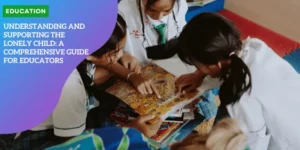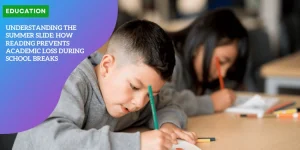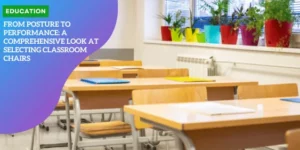Homeschooling Unveiled: Personalized Learning for Every Child
Understanding Homeschooling
Homeschooling is a form of education where parents choose to educate their children at home rather than sending them to traditional schools.
This approach offers unique flexibility, allowing families to create a curriculum tailored to their child’s individual needs and interests.
Sara Foster’s Journey
Sara Foster, an internationally acclaimed author, has been homeschooling her daughters, Hannah and Isabelle, for nine years.
The decision came after her daughter Hannah faced challenges in traditional schooling.
Diagnosed with dyslexia and dyscalculia, Hannah found traditional education structures unsupportive. Sara, valuing a personalized approach, decided to homeschool to cater specifically to her daughters’ strengths.
Homeschooling has allowed Hannah to thrive in art and Isabelle to excel in crafts and science.
Motivations Behind Homeschooling
Families often choose homeschooling for its adaptability and personalization.
For Sara, the choice was driven by the desire to support her daughters’ learning styles and foster a supportive environment.
This choice highlights the strengths of homeschooling, such as enabling a focus on core subjects alongside students’ passions.
Sara’s story sheds light on how homeschooling can be a positive, tailored educational choice.
Looking forward, this personalized approach will encourage exploration of learning challenges and the mechanisms to address them effectively.
Addressing Learning Challenges
Homeschooling as a Solution for Learning Difficulties
Homeschooling offers an effective path for children with learning difficulties like dyslexia and dyscalculia.
The flexibility inherent in homeschooling allows parents to modify teaching methods, ensuring each child receives the support they need.
Sara Foster’s experience highlights how homeschooling can be customized.
Her daughter, Hannah, struggled in traditional schooling due to these challenges, but homeschooling transformed her educational journey.
Tailoring Education for Dyslexia and Dyscalculia
Adjusting the educational approach is key. For dyslexia, incorporating visual aids and multi-sensory learning can enhance understanding.
With dyscalculia, integrating practical exercises and visual elements helps in grasping mathematical concepts.
These tailored methods empower children to overcome academic struggles while nurturing their strengths, whether in subjects like art or science.
Flexibility in Teaching Methods
The adaptability of homeschooling allows parents to experiment with diverse teaching styles, ensuring their child’s learning pace and methods align with their needs.
This flexibility reduces pressure and cultivates a love for learning, which is crucial for educational success.
By focusing on a child’s interests and strengths, homeschooling transforms learning into an engaging and personalized experience.
As we explore further, the focus will shift towards how personalized learning approaches can be adopted, enhancing the educational journey for each child.
Personalized Learning Approaches
Adapting Curriculum to Individual Strengths and Interests
Homeschooling offers a unique opportunity to tailor educational experiences to a child’s specific strengths and interests.
By understanding each child’s inclinations, parents can design a curriculum that not only covers core subjects but also indulges their passions.
For instance, if a child shows a keen interest in earth sciences or artistry, these areas can be emphasized in the daily routine, making learning more engaging and meaningful.
Integrating Arts, Crafts, and Practical Skills
Integrating arts, crafts, and practical skills into education can significantly benefit cognitive and emotional development.
Arts and crafts can foster creativity and problem-solving abilities, while practical skills, like cooking or woodworking, offer hands-on learning experiences.
These activities not only diversify the learning process but also build lifelong skills, enhancing confidence and self-reliance in children.
Balancing Core Subjects with Passion-Driven Learning
Balancing the fundamentals with passion-driven subjects is crucial for holistic development.
Core subjects such as math and language often need structured attention; however, intertwining interest-led projects can make them more relatable.
For example, a math lesson can be embedded in a project about building model structures, merging creativity with quantitative reasoning.
By embracing these personalized approaches, homeschooling enhances academic growth while nurturing individual talents.
As we delve further, the next focus is on dispelling myths and exploring the social dynamics of homeschooling, continuing the discourse on its flexibility and depth.
Socialization and Extracurricular Activities
Dispelling Myths About Socialization
Contrary to popular belief, homeschooling doesn’t isolate children.
Many families, like Sara Foster’s, find that homeschooled kids are often “beautifully social”.
These children frequently engage in a variety of activities, sometimes struggling to find enough time at home due to their busy schedules.
Engaging in Community Activities
Participation in community activities is a cornerstone of homeschooling socialization.
Families create co-ops, sharing teaching responsibilities and ensuring children have ample peer interaction.
For instance, Sara runs a local group for 10-12-year-old homeschooled girls, fostering connections and learning among peers.
Balancing Learning with External Engagements
A balanced approach is key.
Homeschooling provides the flexibility to explore museums, attend community events, and join clubs, allowing education beyond the home.
This diversity ensures that children receive a well-rounded social experience while also nurturing family bonds.
Homeschooling seamlessly integrates personalized learning with vibrant social lives, proving that education can be richly diverse and engaging.
Structuring the Homeschool Day
Flexibility in Daily Schedules and Routines
Homeschooling offers a unique flexibility in structuring the school day.
Unlike traditional schools, where the day is rigidly scheduled, homeschooling allows for a schedule that suits the family’s needs.
Sara Foster, for instance, varies her days depending on what her daughters require.
This flexibility is not only about shortening the day but also adjusting the activities to match the children’s interests and energy levels.
Incorporating Field Trips and Hands-On Learning Experiences
Field trips and practical learning experiences are integral to homeschooling.
Regular visits to museums, libraries, and nature parks provide real-world learning opportunities that textbooks often can’t offer.
Engaging in activities outside the home complements the theoretical knowledge gained indoors, bringing subjects to life and sparking curiosity.
Balancing Structured Learning with Child-Led Exploration
While it’s essential to cover core subjects like math and English, homeschooling thrives on blending structured lessons with child-led exploration.
Sara often follows her daughters’ interests, allowing them the autonomy to dive deep into topics they are passionate about, which makes learning more enjoyable and meaningful.
This blend of structured and flexible education nurtures a love for learning that can last a lifetime.
Resources and Support for Homeschooling
Navigating Educational Resources
Embarking on the homeschooling journey requires a keen understanding of available educational resources.
For Sara Foster, this meant reaching out to local education departments and fellow homeschooling parents to gather initial guidance.
Parents must explore digital and print materials, ensuring they align with their child’s learning style and family values.
Collaboration with Other Families
Building a network with other homeschooling families can provide essential support.
Sara emphasizes how valuable these connections are, sharing teaching responsibilities and creating co-ops for communal learning experiences.
Engaging with others can also offer emotional support and practical advice, making the journey less isolated and more rewarding.
Utilizing Online Platforms
The digital age presents numerous online platforms and curriculum materials that cater to a variety of learning needs.
From comprehensive programs to individual subject resources, these tools can enhance the homeschooling experience, offering flexibility and engaging content for children, like Sara’s daughters.
Understanding these resources is crucial to ensure a supportive and fulfilling homeschooling environment, helping both parents and children thrive without the burdensome pressure of traditional educational structures.
Challenges and Considerations
Pressure on Parents to Create and Follow Curricula
Homeschooling offers the flexibility parents often seek, but it also brings the considerable challenge of developing and following a suitable curriculum.
Many parents, like Sara Foster, discover that they need to navigate the vast array of resources available, which can be overwhelming.
The responsibility of structuring an educational path that aligns with state standards while fitting a child’s unique learning style places significant pressure on homeschooling families.
Ensuring Comprehensive Education Across All Subjects
While focusing on individual strengths and interests can be rewarding, it’s vital to ensure that children receive a comprehensive education in all subjects.
This can involve a delicate balance between child-led exploration and structured curriculum requirements.
Parents may need to research extensively or use online platforms to make sure all educational bases are covered, a task both rewarding and demanding.
Managing Family Dynamics in a Homeschool Environment
Homeschooling can lead to a close-knit family bond, but it can also intensify family dynamics.
Spending significant time together requires parents to be mindful of creating space for individual activities, thereby preventing burnout.
Sara Foster shares that while the close family life is enriching, finding separate classes or activities is crucial to provide necessary breaks.
By fostering independence alongside collective learning, families can maintain harmony and enthusiasm for education.
Transitioning smoothly from internal family-focused learning to expanding into broader community activities can enhance the homeschooling experience.
Bridging Homeschooling and Traditional Education
Recognizing the Value of Both Educational Approaches
In the world of education, both homeschooling and traditional schooling offer distinct benefits.
Homeschooling provides the flexibility to tailor lessons to an individual child’s strengths and needs, fostering deep family connections and personalized learning experiences.
Traditional schools, however, offer structure, a wide range of resources, and opportunities for diverse social interactions.
Sara Foster’s experience illustrates the strengths of homeschooling, particularly for children with learning differences, allowing them to thrive at their own pace.
Yet she acknowledges the structured environment of traditional schools can offer essential resources and a different form of social growth—complementing what a homeschooling parent might provide.
Encouraging Collaboration Between Homeschoolers and Teachers
A collaborative approach between homeschoolers and traditional educators can lead to enriching experiences for all students.
Open dialogues and shared resources between both communities can bridge educational gaps.
Parents like Sara can offer insights into personalized learning, while teachers contribute professional expertise and access to institutional resources.
Fostering a Supportive Educational Community for All Learners
A supportive educational community requires embracing and understanding different learning environments.
Educators on both sides should focus on shared goals—nurturing learners’ potential and fostering a love for learning.
By working together, communities can offer diverse experiences that prepare children for the multifaceted world they will navigate.
Sara emphasizes the importance of this collaboration by sharing her gratitude towards traditional educators and acknowledging their incredible work.
Such mutual respect creates a foundation for a more unified and effective educational landscape.







